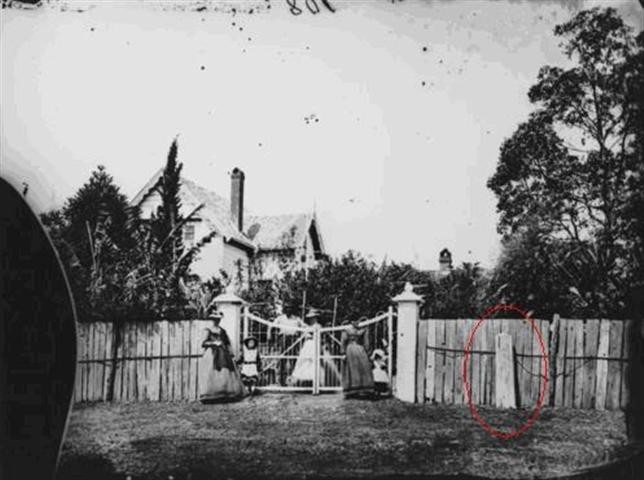Aboriginal boundary posts
By Tania Schafer, Librarian, State Library of Queensland | 20 January 2012

The above image is of the entrance to old Cumbooqueepa, the residence of Thomas Blacket Stephens, South Brisbane. The photograph is from GS-66 William Boag Photograph Albums, held by the John Oxley Library.
I was shown this photograph 15 years ago by a good friend and SLQ colleague, the late Loris Williams. Not knowing which collection it came from, I have been trying to find it again ever since, and finally rediscovered it yesterday (18 January 2012).
Loris told me that in Queensland white poles were placed in front of properties to inform Aboriginal people and police that Aboriginals were not allowed to venture further, however research by Bill Kitson in 2016 shows these posts were originally surveyors' markers.
Dr Ros Kidd's Aboriginal History of the Princess Alexandra hospital site (2000), provides further insight into the restriction of movements facing Moreton Bay Aborigines.
"During the last decades of the nineteenth century Aborigines were increasingly marginalised on their own lands. Although they were allowed into Brisbane town during the day, they had, since the early 1850s, been the targets of a curfew, which was enforced after 4pm and on Sundays. Rev Henry Stobart, who arrived in 1853, remarked that the blacks seem to leave this town at one regular hour each day, and one of the boundary posts was at Cumbequepa (Somerville House), South Brisbane. The major demarcation south of the river operated along Vulture and Boundary streets. Charles Melton wrote that police were empowered by regulation to drive them out of town at nightfall, but because police were so greatly outnumbered by Aborigines in the town the regulation was difficult to enforce. By 1877 it would appear the curfew was more efficiently applied. Recalling the forced expulsion of all Aboriginal men and women at sundown, one traveller wrote: After 4pm the mounted troopers used to ride about cracking stock-whips to notify the Aboriginals to get out. Those whose lands lay south of the river would have retreated beyond the town boundaries to the camping areas of Woolloongabba, Dutton Park, Fairfield, Annerley and the Coorparoo watercourses."
These boundary posts are a sad reminder of the treatment of Aborigines in colonial Queensland. Images of these boundary posts are rare and the reason for my search over the past fifteen years.
Tania Schafer, Librarian - State Library of Queensland
Comments
Your email address will not be published.
We welcome relevant, respectful comments.